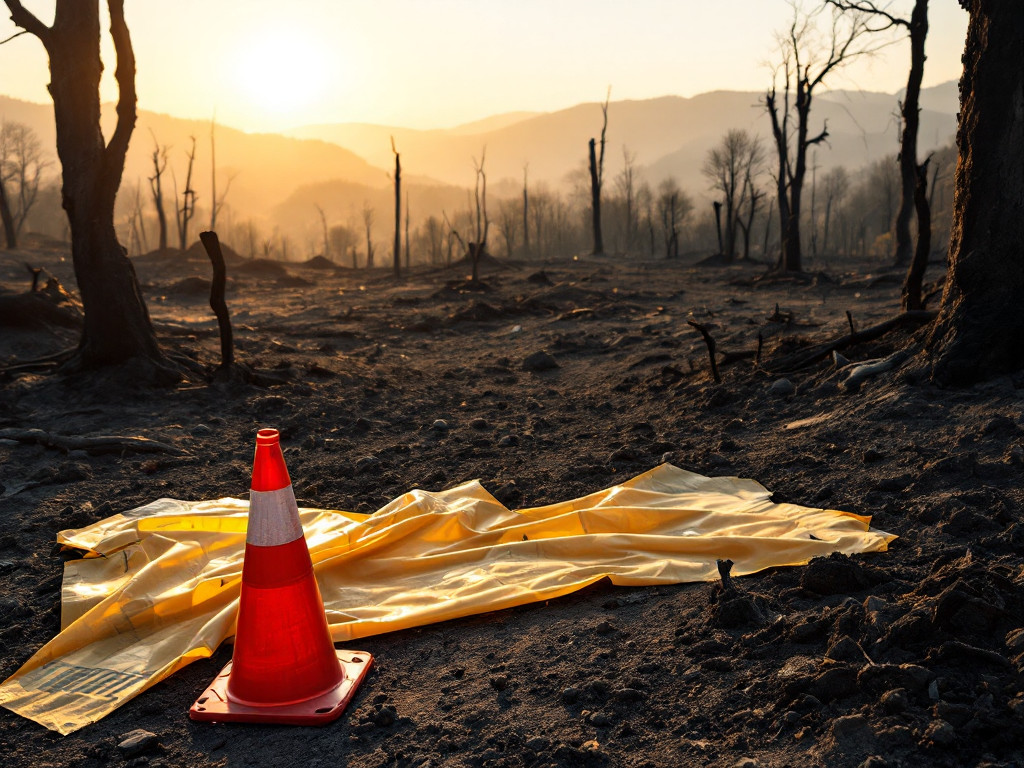Discovery Raises Los Angeles Fires Death Toll to 30
Nearly three months after devastating wildfires scorched parts of Los Angeles, authorities have confirmed the discovery of human remains in Altadena, California. This tragic finding marks the 30th confirmed fatality in one of Southern California’s most destructive fire events. The remains were located on April 2 by a team from the Los Angeles County Medical Examiner’s Office near Lake Avenue in Altadena. This latest identification brings the death toll from the Eaton Fire alone to 18, with 12 additional fatalities attributed to the closely related Palisades Fire.
Both fires erupted in early January, and their impacts have been severe. The Eaton Fire alone burned 114,021 acres, destroying approximately 9,414 structures and damaging over a thousand others. The Palisades Fire, occurring around the same period, compounded the crisis, destroying thousands of additional homes and pushing the total damages into billions of dollars. Authorities have confirmed that many of the deceased were older adults and individuals with disabilities who were unable or unwilling to evacuate promptly, choosing instead to attempt protecting their homes.
“The recent discovery highlights the difficulty and meticulous effort required in post-fire clean-up and identification tasks,” said L.A. County medical examiner Dr. Emilia Vasquez. “We continue to use extensive forensic methods to offer closure to families who suffered unimaginable loss.”
Thousands of residents had to evacuate with little notice as strong winds, at times reaching speeds of up to 100 mph, accelerated the flames rapidly, complicating rescue and suppression efforts. The extensive damage and frighteningly quick spread underscored significant vulnerabilities in emergency preparedness and fire management systems in urban areas.
Chronology and Ongoing Investigations
The Eaton Fire first ignited in the early hours of January 7, quickly spreading due to powerful Santa Ana winds and prolonged dry conditions exacerbated by an ongoing drought linked to climate change. The fire continued to burn intensely for nearly a month before containment was declared. Authorities implemented mass evacuations across Altadena, Palisades, and surrounding communities, though many faced challenges evacuating due to mobility issues or limited communication.
To date, the root causes of these catastrophic fires remain officially undetermined, with comprehensive investigations actively underway. Early assessments, however, point to human-driven climate change as a significant factor that greatly amplified the severity of these fires. The region has experienced increasingly frequent and severe droughts in recent decades—conditions scientists relate closely to global warming.
Given the scale of the disaster, a Special Operations Response Team has been meticulously combing through the affected areas, looking for potential evidence and attempting to identify victims using state-of-the-art forensic methods. Identification processes often involve DNA testing, dental record comparisons, medical history examination, and radiography scans for unique medical implants or devices.
“Every new finding is heartbreaking,” stated Chief Investigator Richard Kim. “Identifying victims helps closure, but our hearts remain heavy with each loss confirmed.”
Meanwhile, recovery processes continue to move forward, albeit slowly, as authorities work on removing hazardous debris from the thousands of destroyed structures. Local and federal agencies have acknowledged the extreme financial and logistical burdens associated with the unprecedented scope of the disaster, describing it as one of the most costly in United States history.
Historical Context and Future Implications
Historically, wildfires have always posed a substantial risk in California. However, the severity and scale of recent events like the Eaton and Palisades Fires represent a troubling escalation. In previous decades, most land use and development policies did not account fully for modern fire risks intensified by climate factors, leaving communities underprepared for such catastrophic events.
The 2018 Camp Fire, for instance, holds the somber distinction of being California’s deadliest wildfire, claiming 85 lives and flattening the town of Paradise. That tragedy prompted significant revisions to California’s building codes, evacuation procedures, and forest management strategies. Yet, the Los Angeles fires highlight lingering gaps in urban fire preparedness, particularly regarding swiftly moving fires affecting densely populated neighborhoods.
As climate patterns continue to shift, researchers and policymakers emphasize the necessity of revising and improving urban planning strategies, community resilience initiatives, and emergency response systems. The fires mark a clear call to action regarding building regulations, fire management policies, and climate change mitigation efforts statewide.
Developments in firefighting technology, such as enhanced predictive models and quicker aerial deployment capabilities, are also spotlighted in discussions concerning future preparedness. Legislative initiatives are already underway aimed at enhancing community evacuation protocols, increasing funding for wildfire response, and tightening standards for residential building materials.
With the death toll from the Los Angeles fires now standing at 30, policymakers and stakeholders are grappling with broader implications that such devastating events pose not only for California but for urban regions worldwide vulnerable to climate-led disasters. Long-term strategies must address not just immediate emergency responses but also systemic changes to reduce risks and vulnerabilities substantially.
The discovery in Altadena serves as a painful reminder of the human cost behind the policy and planning discussions, underscoring the urgency of California’s wildfire prevention and mitigation efforts moving forward.


